Nicolas Sassoon
His animations use the visual language of vintage computer graphics to explore timeless topics.
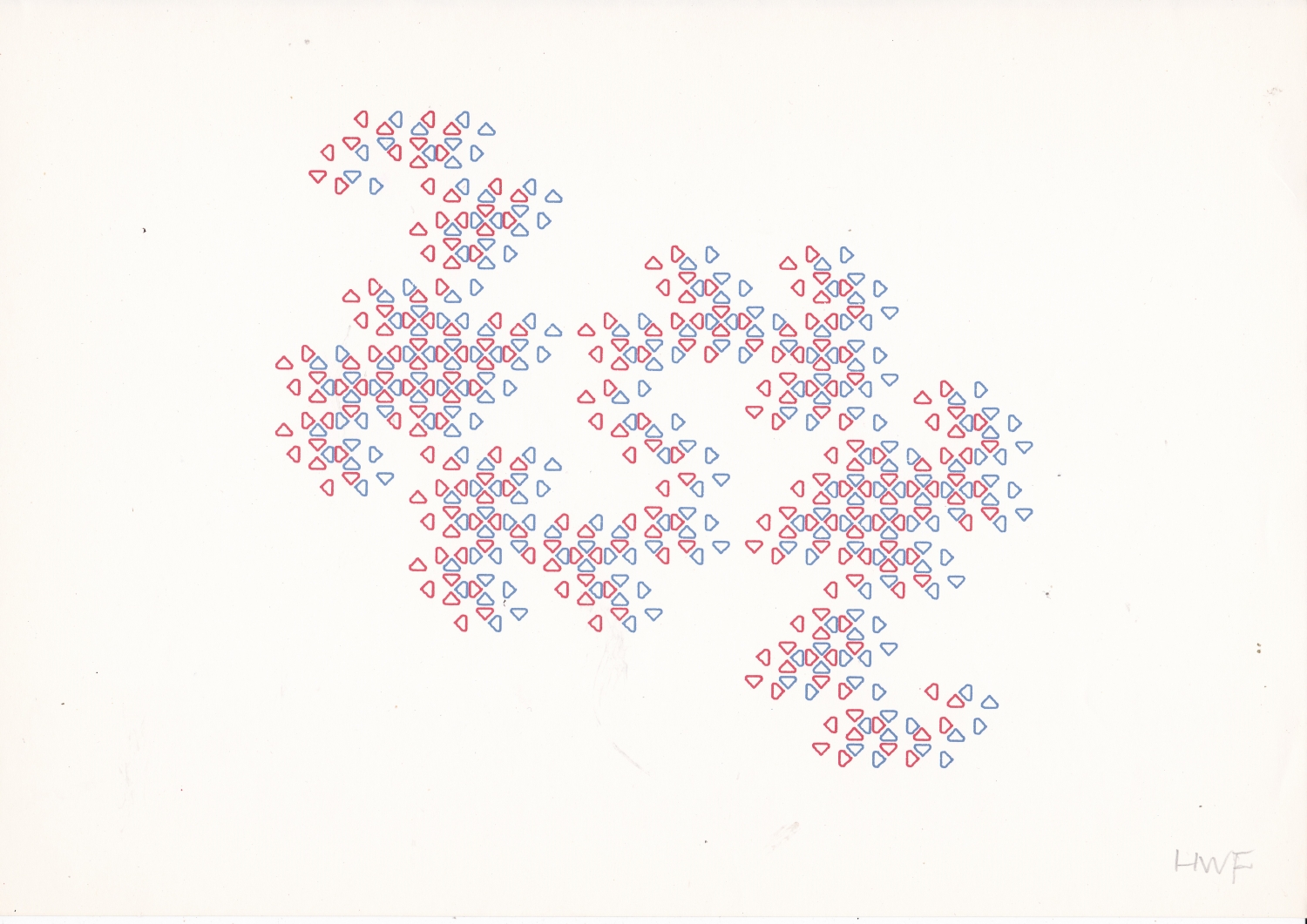
Herbert W. Franke celebrates his ninety-fifth birthday on May 14. Trained as a theoretical physicist, he approached art as an experimental practice aimed at understanding the fundamental nature of perception. His earliest generative works of the 1950s employed analog techniques—photographing illuminated wires and film strips, or the activity of a cathode ray oscillograph—to produce austere and beautiful abstractions. In the late 1960s he began exploring the use of digital computers to make plotter drawings and interactive software art. Below, Franke reflects on the evolution of the field he pioneered in conversation with Casey Reas, a key figure in generative art from a younger generation. Like Franke, Reas has not only innovated in terms of forms and tools, but also encouraged new developments in art and technology by producing publications, events, and platforms for others. Franke conceived art software for the first home computer; Reas cocreated Processing, an educational tool and a sketchbook for artists who use code. Franke was one of the founders of Ars Electronica, the leading festival of media art, in 1979; last year, Reas established Feral File, an NFT platform organized around online exhibitions. Both artists value dynamism and fluidity both as essential qualities of computer art and as ways for audiences to experience the possibilities of creative coding. Their conversation was conducted via a shared document with assistance from Franke’s wife, Susanne Paech.
CASEY REAS I would love to start by asking about your pre-digital work from the 1950s and early 1960s. Did you think of it as experimental photography or electronic art at the time? Were you building your own circuits to control the electron beam? Was there anything happening in the art world that you felt was related to these explorations?
HERBERT W. FRANKE I did not think that I wanted to make art at the beginning. It was aesthetic research. I wanted to apply analytical methods to figure out why humans find some artworks attractive and beautiful and others not. It was only two years or so after I started—under the influence of my mentor Franz Roth, a historian of modern art—that I decided to call it art. Coming from the field of electron optics, I approached art as a scientist. I was a theoretical physicist, which meant I was no good at building circuits. The computer I use was built by a friend in dialogue with me.
I didn’t think much about genres or categories of art at the time. In any case, I believe that the meaning you give to terms is more essential than the terms themselves. If you had asked me back then, I most likely would have called it electronic art.
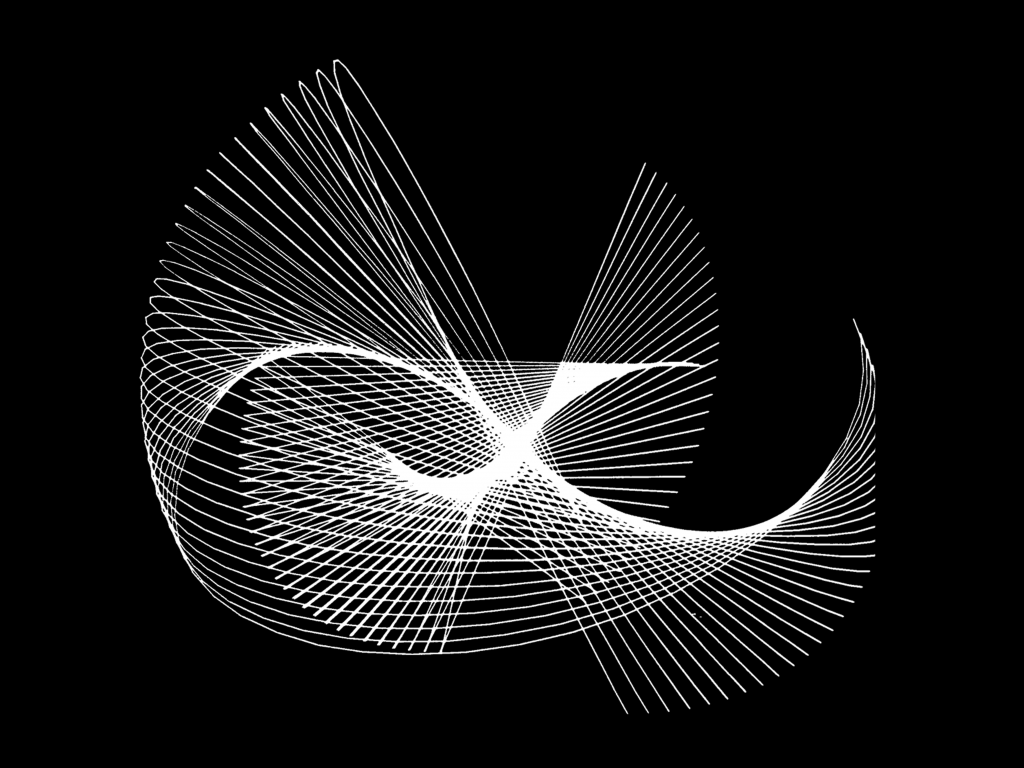
REAS I also didn’t find my path into art until a little later in life. It happened while I was a research assistant and graduate student at the MIT Media Lab, studying with John Maeda. At MIT, I took classes in art, electronics, robotics, computer programming, and signal processing. It was my own synthesis of these areas and meeting artists like Michael Joaquin Grey that allowed me to find my current path.
Herbert, can you tell me more about the transition from “electronic art” to working with digital computers? For example, exhibitions like “Cybernetic Serendipity” at the Institute of Contemporary Arts in London in 1968 included both. But histories of computer art today often start with work created on mainframe computers, like that of A. Michael Noll and Georg Nees. What was it like to transition from working with analog to digital computers?
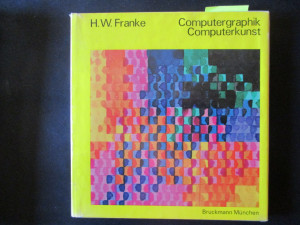
FRANKE I don’t believe that computer art suddenly appeared because computers existed. And I think that my own work demonstrates this. Of course, the computer is the optimum, the universal machine par excellence for any kind of analytical art. But artists have been creating works rationally and “construct” them analytically—you could say they have a program in their heads—long before the computer existed. Eadweard Muybridge used cameras to capture human movement, and Piet Mondrian and the constructivists created works that followed rigid structural principles. After World War II, generative photographers and op artists were exploring issues I was interested in, such as human perception. But many of them did not make the transition to the computer until much later, if at all. I was perhaps particularly radical in my views, because my scientific background meant that I saw the computer early on not just as a tool, but as a kind of partner who could do some things better than I could, such as offer all conceivable permutations of a code. Even to analytically practicing artists at the time, such views seemed a little bold.
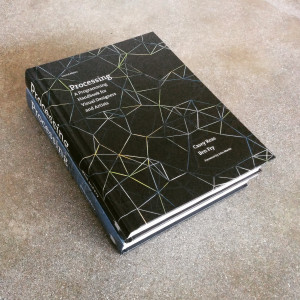
REAS I love that perspective and I agree. On the subject of the role of digital computers, your book Computer Graphics, Computer Art opened a new world to me when I first encountered it, about thirty years after it was published in English in 1971. What is the origin of this book? How was it received and what was the perceived impact?
FRANKE Thank you for your kind words. The book’s influence is probably due to the fact that people like you read it! However, I believe your question is a little misguided. The book’s impact was minimal until recently. Our community’s way of thinking was so different from that of the people involved in traditional visual art. I wrote this book because I strongly believed it was critical to at least try to inform the world that there was a new trend of creating art using digital codes and analytical methods, that this trend would sweep the globe, and that the use of cutting-edge technology would become critical for artists in the twentieth century and beyond.
REAS The Ars Electronica festival in Linz, Austria, has been a major connection between the public and the media art community since it was started in 1979. It provided me with incredible opportunities early in my career as it has for multiple generations of artists. How did Ars Electronica begin and what was your role in its creation? What was the cultural climate for media art in Europe at that time?
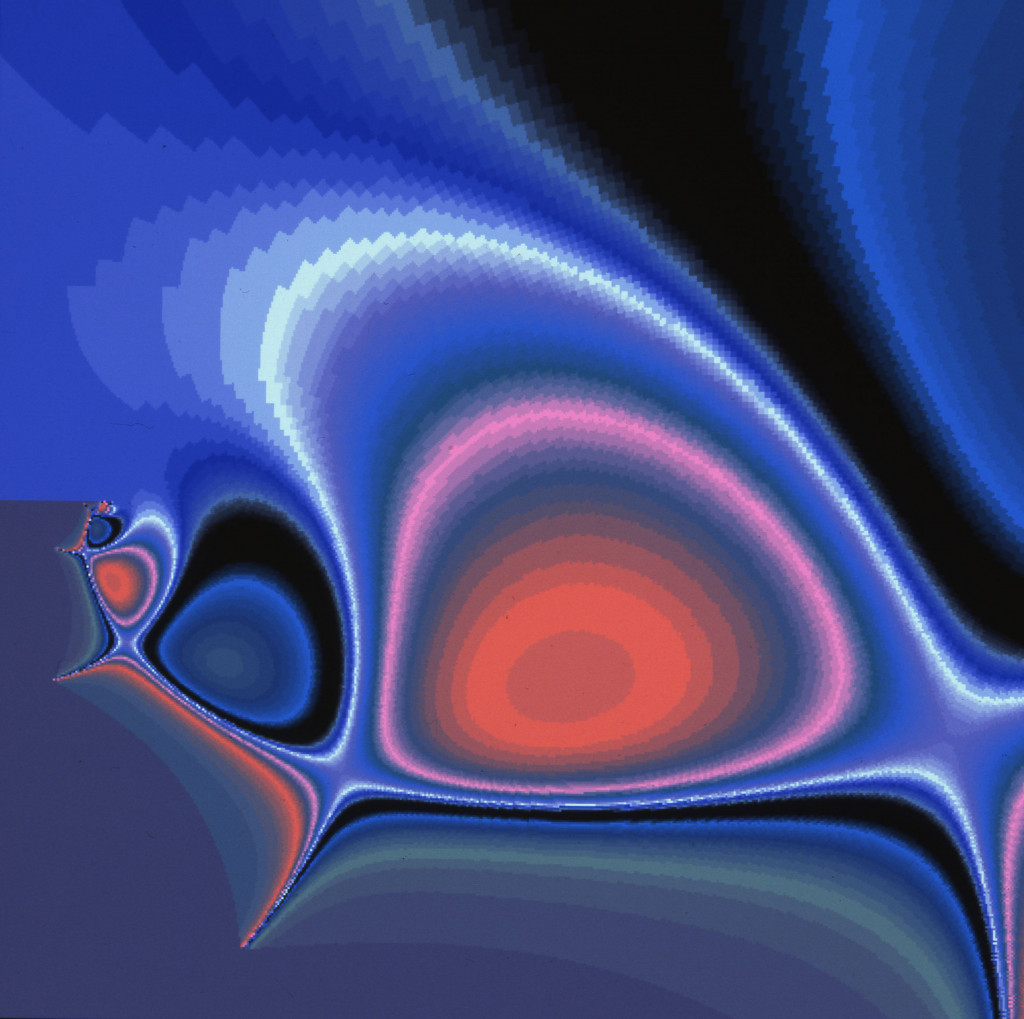
FRANKE The climate for media art was still underdeveloped, to put it gently. But that didn’t stop me from getting projects off the ground. In Vienna, there was an artists’ association that was led at that time by a photographer, Hans Mayer. I joined as a member in 1974. Mayer and I wanted to realize a great dream: a symposium with an exhibition under the title “Ars ex Machina,” which already said it all. From historical fireworks to musical instruments to computer art, it was to be a survey of how humankind has always made creative things with machines, to legitimize the recent activities of artists working digitally. I worked on this concept for almost a year, but then the funds we thought we had been promised did not materialize. By a stroke of luck, Hannes Leopoldseder, director of the Linz studio of the Austrian national broadcasting company, became aware of my concept. He visited me in January 1979 because he had a plan to develop the industrial city of Linz into Salzburg 2.0—a new cultural center for Austria—with something “innovative in the arts.” He thought new media would be interesting. And so “Ars ex Machina” became Ars Electronica, with a symposium, exhibitions, and events. I was instrumental in designing the program at the beginning. By 2000, the festival had long since established itself, and I was no longer involved. That’s why we didn’t get to know each other back then. But it’s always nice to find out that seeds you’ve planted are sprouting. As I understand, you are a recipient of the Prix Ars Electronica, which was introduced in 1987.
REAS Yes, we were awarded a Golden Nica in 2005 for the creation of Processing. It was an important moment for our project, which was young at that time. Ben Fry and I started Processing in 2001 as a way to bring more people into writing code. We created Processing as a code sketchbook for ourselves, and as a first environment for new learners. We celebrated the twentieth anniversary of the community and software last August. The project started small and has grown to a scale that we never could have imagined. We think of Processing as one of many environments that have been created to bring artists and designers into the realm of creating software, going back to explorations like Art1 and Logo in the 1960s. I’m curious about your Mondrian software from the late 1970s. Did you think of it as an artwork or a tool for education, or both?
FRANKE That’s interesting to learn about Processing. The origins of Mondrian were similar. The program was introduced at the very first Ars Electronica in 1979! I had been approached by Helmut von Falser, who was business manager for Texas Instruments in Germany, Austria, and Switzerland at the time. He had the idea of including an art program with TI 99/4, the first home computer. He asked me if I was interested in this project. I immediately said yes, of course. He didn’t give me any specifications. I wanted to pursue three goals. First of all, I wanted to run dynamic processes with a program. I always thought that digital art should break away from the traditional image on the wall and make fine art dynamic. Secondly, I also wanted the program to have two modes: one in which the program runs automatically, and another in which the viewer could intervene. I’ve always thought that computer art should be interactive and invite the audience to be part of the creative process. And thirdly, it was important to me to show that programs are more generalist than traditional media, that you can use them to merge music and image into one work.
As you can imagine, the computing and storage capacities of the TI 99/4 were minimal. There weren’t many possibilities for moving sequences, so I decided to apply the principles of Piet Mondrian, who worked with horizontal and vertical bars. These wouldn’t need much computing power and could be coupled with simple color palettes. I put the whole thing into comprehensive flowcharts, which were then implemented by a programmer. How about you, what is your opinion concerning these three points?
REAS I’m thrilled to hear you advocating for dynamic processes in digital art. I think digital art’s ability to change as it runs is one of its most unique and essential qualities. Ideas about endless variations that can be adjusted by the viewer have been important to my work throughout.
The history of early digital art in the form of plotter drawings and photographed electronic images is well documented, but we don’t know as much about artists creating dynamic work with early home computers. It was only a few years ago that I first learned about Samia Halaby’s software art for the Commodore Amiga, and I only learned about your Mondrian software while preparing for this interview. I’m excited for more work from artists working with real-time code from the early home computer days to be documented.
I’ve been an eager reader of science fiction since I was a teenager. In the 1990s, early cyberpunk novels and short stories captured my imagination. More recently, I’ve been re-reading Octavia Butler and Ursula K. LeGuin. I just acquired copies of your books The Orchid Cage (1961) and The Mind Net (1961) in English translation. When I was in Germany last month, I learned that many of my German-speaking friends had read your fiction. I’d like to know more about the relationships between your work as an artist, science fiction author, and scientist. How does each inform the others? What are the core ideas explored in your fiction?
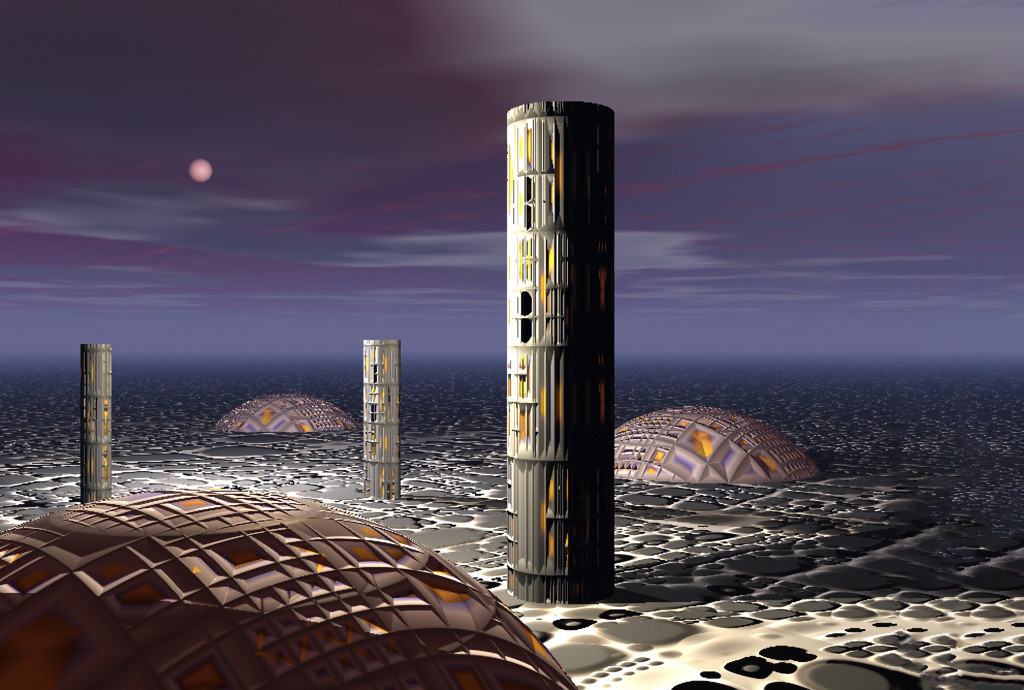
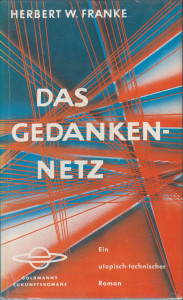
FRANKE I believe that science fiction, like computer art, is the art form of natural scientists and technicians. The fundamentals of the creative process are rational. Computer artists use analytical methods to develop code, just as science fiction authors use them to develop models of our future.
When I was making generative photography and writing science fiction in parallel, I asked myself what art really is. A physicist seeks general principles about a field of research. To do this with art means taking a different approach than a traditional art historian would. You must look for the common ground shared by all types of art. The answer I found to this problem is that all kinds of art are offerings to human perception. As heterogeneous as they may be, all art makes offerings to the sensory organs of potential recipients. The quantitative measurement of information delivered to the sense organs is important, but it is not the only aspect that should be considered. Works of art have effects that extend beyond the moment of initial perception. I described this with my multilevel model of art. For centuries, artists used intuitive, unconscious methods to achieve their effects. But for the first time in history, cybernetics and information aesthetics have given the artist a rational grammar to use as a guideline. Humans are able to selectively concentrate on different levels of meaning of an artwork. If each level is configured according to the conditions for optimal perception, the work can offer new meanings each time it is presented. In literature these levels can include word choice and sentence structure, plot and narrative, and the social and scientific structures described in a book. The multilevel model helps us see how the artist appeals to different levels of perception.
The principles that I developed in my theory of rational aesthetics can be applied to all of my own creative output, from electronic art to literature. But the emotional level of art is important as well. Without an emotional component, art cannot function. As a novelist, I always tried to wrap up my different models of a possible future in exciting plots to fascinate readers, thus inspiring them to think more deeply about the problems I was demonstrating—and to help shape the future more actively instead of just letting it happen. That’s why I’m also pleased that readers have repeatedly told me that my stories inspired them to study science or technology. The search for uncharted territory has always been central to me as an artist and scientist, and I have hoped to take other humans along with me to follow this analytical path into the unknown. It seems that I’ve managed to do that sometimes, and I feel good about that.
—Moderated by Brian Droitcour
